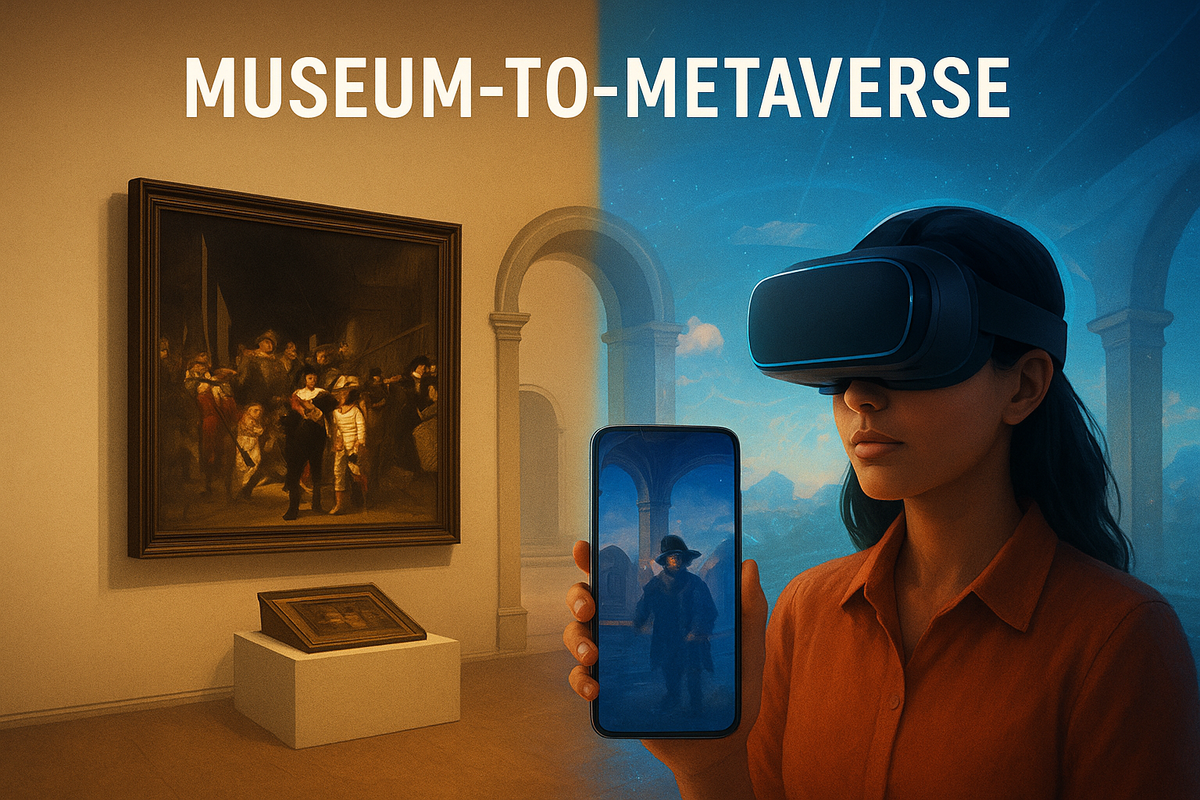Museum-to-Metaverse: How AI Reimagines Cultural Heritage
Museums are using AI tools to restore pieces of history and to provide virtual walk-throughs. Where will human craftsmanship find itself post this revolution?

Museum-to-Metaverse: How AI is Reimagining Cultural Heritage
As museums struggle with reduced physical footfall due to the rise of digital spaces, AI has quietly and quickly turned the museum experience for visitors. With the help of AI, museums are now storytellers and cultural time-machines!
The question is no more “how do we display history?” Instead, it is, “how do we simulate it?”
From deep learning restoration systems that repair damaged archives, to metaverse-ready 3D recreations of heritage sites, museum experience is evolving from something one visits to something one can inhabit.
Restore What Time Erased
AI reconstruction models are now filling up the missing links that lost their way to time and evolution.
The National Museum of Korea recently used machine-learning based vision models to rebuild ancient manuscripts and temple paintings that were earlier faded. By learning the brush-style, pigments and techniques, AI tools can digitally “restore” sections based out of simple scans of similar works.
Not just Korea, the Rijksmuseum in Amsterdam used a similar method to rebuild missing pieces of Rembrandt’s Night Watch. It was earlier trimmed in the 1700s to fit a different wall. However, AI tools studied Rembrandt’s strokes and color logic to restore the original dimensions.
Walk-through Cultural Worlds
The metaverse layer of heritage is where the disruption becomes visible to the public.
The Indian Museum of Kolkata has been experimenting with XR layers that allow visitors to “walk through” Mughal miniatures and witness them as interactive worlds instead of static illustrations. AI generative models generate motion, depth, and contextual behavior from what was once a flat painting.
Japan’s Kyoto Culture Association has taken this even further with AI-driven volumetric scanning of ancient shrines, enabling real-time VR exploration of sites that are restricted for conservation reasons.
Will AI Impose Itself on Authentic Craftsmanship?
This is where the debate is heating up. If AI is reconstructing missing art, completing incomplete murals, or animating folklore, does it replace the importance of an artist?
While curators argue that AI isn’t replacing history, but it’s completing it, critics debate that completion is still a form of creation. While it does help in preserving history, whether it provides the same experience as the original is controversial.
But One Thing is For Sure:
AI is expanding culture’s reach. Maybe the museum of the 2030s is not a place we enter but an idea and experience that enters us: through our PCs, AR glasses, or phone lenses.
From museum to metaverse, heritage isn’t being preserved for the future.
It’s being rewritten to make it future-ready where generations know how to consume.


